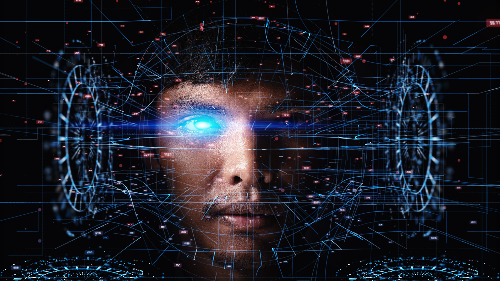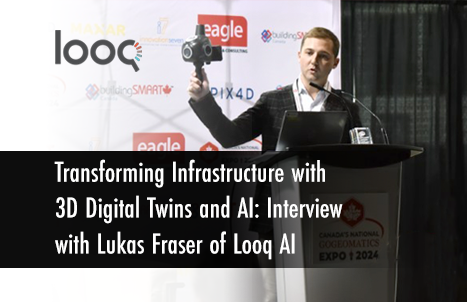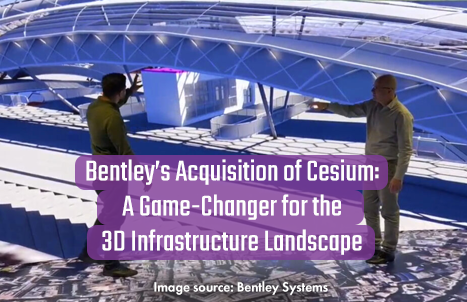Canadian BIM and Digital Twin Digest for January 11, 2023
- The Future of Digital Twins with Michael Grieves
- A Digital Twin At A National Scale: Welcome to Imagining Canada’s Digital Twin
- Transforming Digital Data: Message from Construction Canada President
- 3D Visualization for Built Environment Micro-credential Unvieled by Mohawk College
The Future of Digital Twins with Michael Grieves
At ASME’s 2021 Digital Twins Summit, Michael Grieves (originator of the digital twin concept) had discussed the future of digital twins.
His keynote presentation was on intelligent digital twins, the combination of artificial intelligence, machine learning, and current digital twins. He says there isn’t much AI in today’s digital twins, but that is changing. We have information from models, behavioural aspects, and simulations, to create virtual, real-world environments. The next step is to combine all this useful information automatically.

Grieves says AI can help in the reduction of resources as it will help us see what will, and what won’t, work. There is so much data, and humans tend to look only at what data confirms what we thought. AI can take caste of large amounts of data and run several scenarios to help make decisions.
When it comes to manufacturing and production, a digital twin can assist with everyday work. Digital twins can help engineers and others see issues before they become serious and can be dealt with. Engineers will need to have input from others and develop teams. This may make engineers feel uncomfortable, but it will broaden perspectives and guarantee success.
Grieves believes the industry needs to invest in digital tools and “digitally integrate” from the manufacturing floor to the supply chain to stay current with digital twins.
A Digital Twin On A National Scale: Welcome to Imagining Canada’s Digital Twin
Imagine a digital twin of Canada.
That’s what Imagining Canada’s Digital Twin, ICDT, would like to do. ICDT, a national group is looking into what is involved in the first national initiative to address whats needed to develop a digital twin of Canada. Right now, their research is an “exploration of an idea.”

The ICDT wants to begin by forming a consortium to research and create a framework to build a digital twin of Canada. The first phase involves researching the digital twin of the built environment of Canada’s Architecture, Engineering, Construction, and Owner Operator (AECOO) industry.
The ICDT wants the proposed consortium to be national, inclusive, multidisciplinary, technical, cultural, and ethical. The group sees this project as an opportunity to develop Canada’s AECOO industry’s position in innovative digital technologies.
Transforming Digital Data: Message from Construction Canada President
In a New Year message from Construction Canada President, Kazim Kanani, the topic of “Big Data” and its benefits to the industry was discussed.
“Big Data” is the large, complex, difficult-to-process data produced by the industry. It includes, among many others, BIM, utility meters, reports, emails, drones, sensors, documents, and drawings.

Every day, the industry generates 2.5 quintillion bytes of data. A 2018 “Big Data” report by FMI showed the engineering and construction industry generated 96% of unused data. If that data were harnessed, the benefits to the industry would be endless. It would assist with decision-making, productivity, safety, reduction of waste, and improved documents. The challenges include a lack of knowledge, tools, system integration, and a confident goal.
New advancements in technology and software continue to be developed. BIM continues to transform projects while the industry continues to learn to make better use of the data and technology available.
3D Visualization for Built Environment Micro-credential Unveiled by Mohawk College
Hard work pays off.
This is obviously true for the now-ready 3D Visualization developed by Mohawk College in Hamilton, Ontario, for the Built Environment Micro-credential.
The program will provide BIM, 3D rendering tools, GIS, Digital Twins, and virtual reality/3D printing skills development. These skills will be used for the construction, presentation, design, operations, and maintenance of spaces and buildings.

photo credit: Mohawk College Facebook site
A tentative start for the program is set for early this year. The program has five micro-credentials, each can be completed in 12 weeks or less. It is a flexible program to allow students to go at their own pace while connecting with industry expert facilitators at the college.
The next step for the construction, engineering, and architectural sectors rests on 3D and VR/AR, and this program is specifically geared toward those sectors.






